Informatica wants customers to be successful on their data governance journey. We recognize that this journey may seem complex, but with the right approach it can be simplified. With any undertaking the key is to have a plan to help get organized. The fastest way to success is by leveraging similar initiatives and taking best practices or plans that suit your needs and expanding on them. This concept holds true for the development of an enterprise data governance strategy as well. There isn’t a need to start from scratch when the process can be simplified and streamlined using the Informatica Data Governance Framework and methodology as your blueprint.
Even if your organization has a data governance strategy in place, this may be the time to revisit it, especially with the recent emphasis on digital transformation and migration to the cloud.
Now that we have an approach, let’s get started by reviewing the components of this journey. Having this knowledge will enable seamless navigation of the necessary steps.
Building the Framework
It’s best to start with a framework. This enables an organization to lay out all the components that need to be considered from inception to a fully operational Enterprise Data Governance organization and corresponding methodology. This does not guarantee it will be 100% correct on the first try. However, this approach will minimize the extent of any rework. This is where the Informatica Data Governance Framework is useful to guide your organization through the planning phase.
The Informatica Data Governance Framework
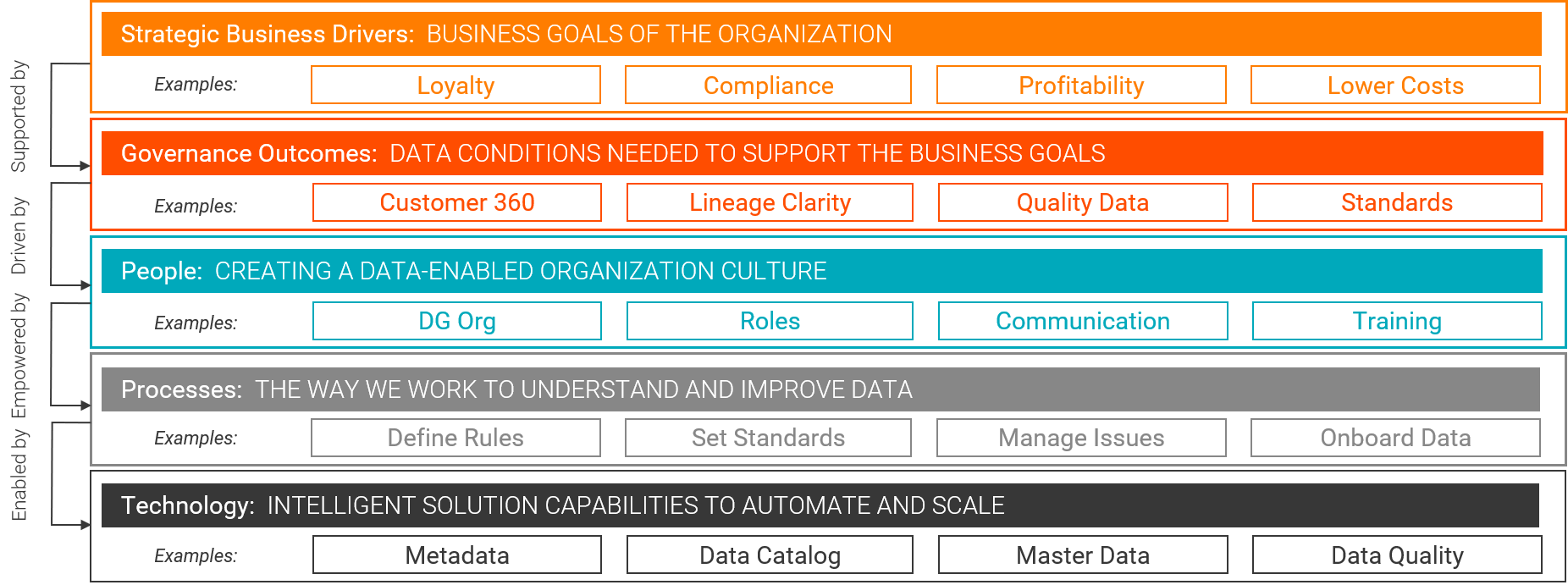
The above diagram is simply a representative example. Each organization will need to consider each of the building blocks and determine which ones best represent the goals and needs of the organization.
Discovery and Assessment
With the framework in-hand, the next step is to develop an understanding of the current data governance landscape. Even if an organization believes they have a baseline understanding, it’s best to verify. Strategies change, people move to new positions, the volume and structure of data changes, and so on. The maturity and efficacy of the program could have shifted without being noticed; especially in the throws of a digital transformation and data integration initiative.
To facilitate the process of discovery and assessment, Informatica offers a Data Governance Maturity Assessment, with a total of 12 questions focused on:
- Leadership
- Culture
- People
- Process
- Technology
Below is an example of the survey and output. While it isn’t complex, the results are powerful.
Informatica Data Governance Maturity Assessment
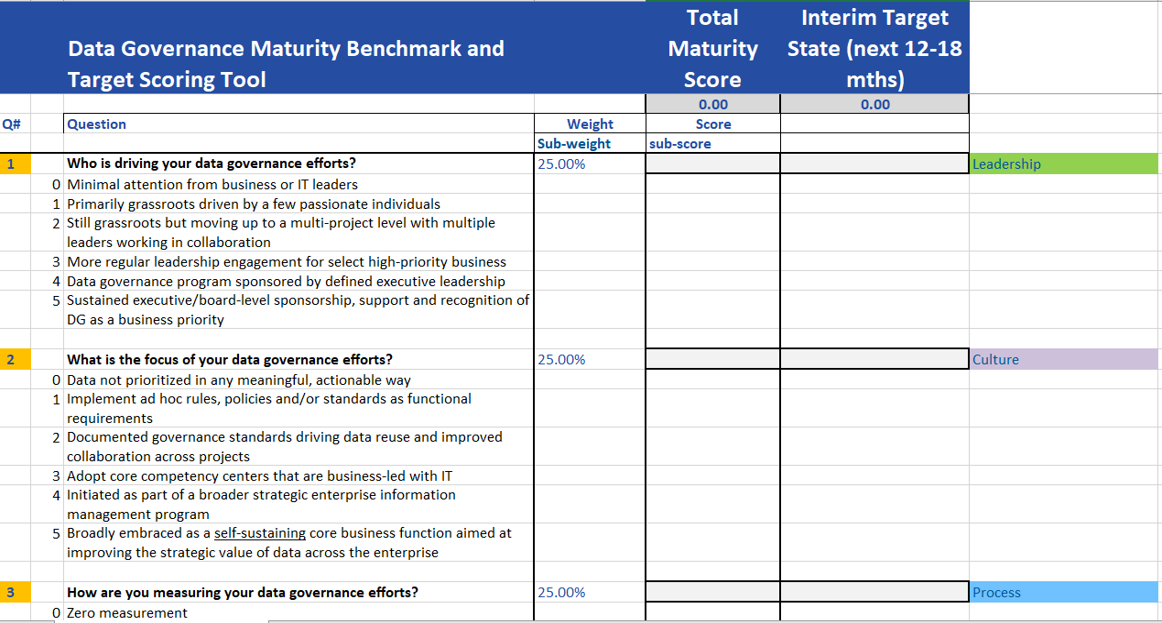
The output example below provides direction on the areas of immediate focus within an organization.
Data Governance Maturity Assessment Results
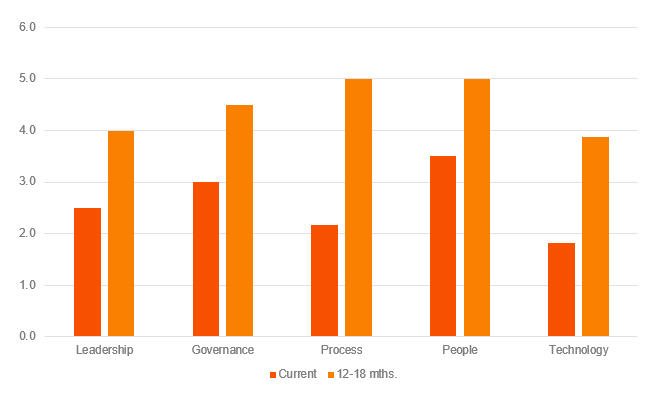
The graph below depicts the ability to compare an organization to others in the same or similar vertical.
Data Governance Maturity Score by Industry Sector
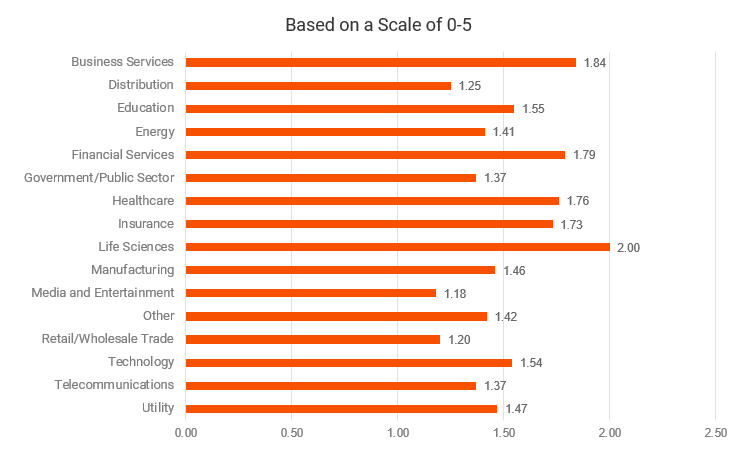
Discovery and assessment aren’t only about a 12-question survey and some graphs. While extremely helpful in understanding the current state and areas of prioritization, there’s more. Additionally, the organization needs to understand its top business strategies, what is required to be successful, and the challenges preventing the organization from doing so. This can take place in one of three ways:
- A knowledgeable individual from within the organization can conduct stakeholder interviews.
- The same individual can conduct a workshop with all stakeholders together.
- An independent 3rd party can facilitate the interviews or workshop.
Typically, the third option is the most effective as associates tend to speak more freely when the facilitator is from outside the organization. Independent of methodology, what is important is the development of a prioritized set of use cases to focus the initial efforts. These results will be aggregated into a prioritized set of data governance pilot use cases that will become the initial focus of the data governance initiative.
At times the assessment and prioritized set of pilot use cases just isn’t enough to propel an organization to move forward with this initiative. Also available from Informatica is a facilitated Business Value Analysis to organizations that qualify. The interview sessions referenced previously can be leveraged for this effort. Below is a snippet of the output of the analysis. Results vary from organization to organization. However, the results are compelling.
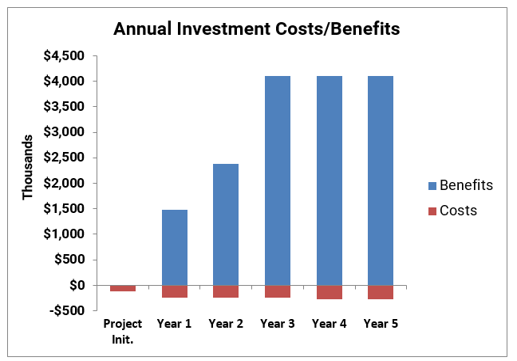
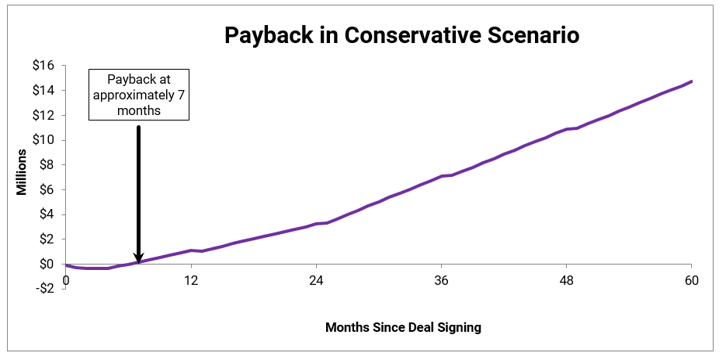
Design Considerations
Now it’s time to design the initial data governance operating model. The initial decision is to determine the model that best fits the organization’s needs. The choices are:
- Centralized
- Decentralized
- Federated
The most common model implemented is Federated with the standards being driven from the core and implemented locally with stakeholder input and participation.
It’s also important to think of the roles and responsibilities on both the business and technology side that will be required long-term. This doesn’t mean that you need to implement the full structure and have every position filled to get started. The opposite is true. To begin with, many of the identified roles, such as data stewards, most likely have someone presently doing this work; it is now a matter of formalizing it. Another advantage in starting small with a representative organization structure is the flexibility it provides for adjustments to be made. And possibly, the lessons-learned may indicate that the initial design selected may not be the right fit after-all. This doesn’t mean the effort has failed, only that adjustments need to be made. It’s all part of the maturation process.
Throughout the process, but most importantly during the design phase, is the need to consider change management impact. This will cause a shift in the organizations culture, a need for re-training and upskilling – easily addressed when identified and planned for. At this juncture it’s also best to design some core metrics and KPI’s.
Implementation of the Enterprise Data Governance Program
The recommended approach is to think big, start small and scale quickly. How does this translate to what we discussed previously? By this point, you have the support of the executive leaders, funding, initial design considerations and pilot use cases.
Select the top two to three pilot use cases and identify the departments, domains, and individuals that need to participate. Unsure which use cases to prioritize? Think about criteria such as high-impact and low complexity use cases with similar data governance capabilities involving one or two departments. The program does not need to launch across the entire organization all at once. An example is to select use cases utilizing systems that are global in nature. However, execute the initial proof of concept locally and expand in a subsequent phase. Along the way be sure to communicate through a structured approach. This will help to keep the organization informed and provide a vehicle to celebrate success --as you will be successful.
Roadmap Development – the Path Forward
Beyond the initial launch of the program, there is also a need to think strategically, determining the plan over the next three years. Essentially the development of a journey map that translates into a project plan that you will execute against. The goal is to transform from project-based activities to business as usual. This can happen relatively quickly with a plan in place. Following is an example of one organization’s journey map:
Data Governance Roadmap
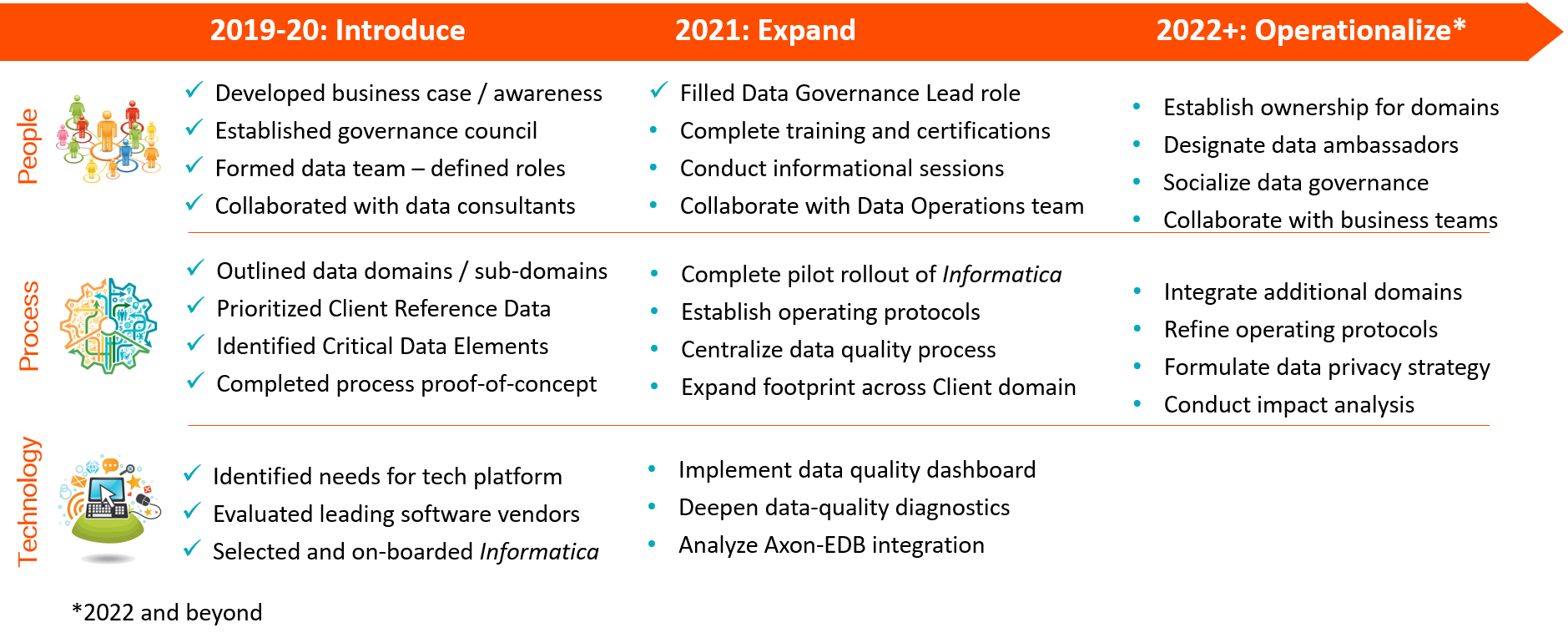
Following this methodology should help any organization, independent of size, define and implement their Enterprise Data Governance organization.
